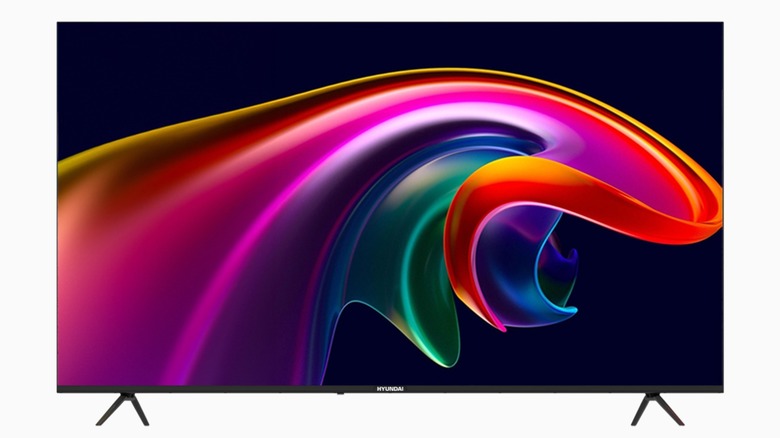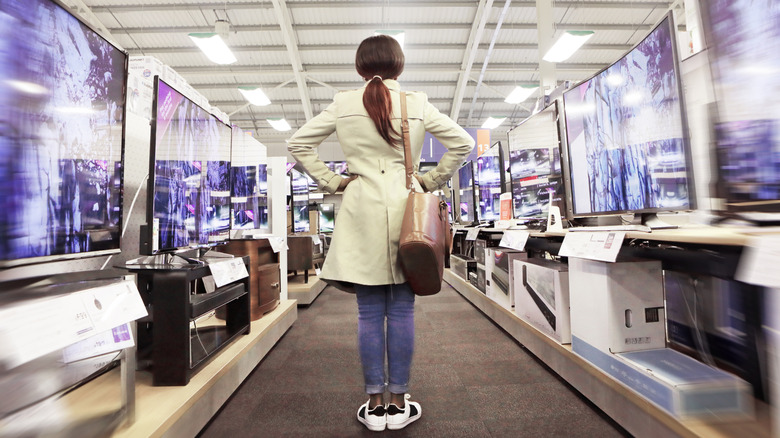Yes, Hyundai Also Makes TVs (But You Can't Buy Them In The US)
When you think about Hyundai, you'll probably think of successful cars like the Ioniq and Santa Fe. But did you know that in certain parts of the world, the brand is also associated with appliances, especially television displays? In fact, Hyundai was the first company to introduce a 3D television to Japan in 2008, a few years before Samsung introduced the first mass-produced 3D LED TVs globally in 2010. It's unclear when exactly Hyundai formed its home appliances division, as the company's digital footprint is mostly focused on its automotive business. However, we know that it's been making electronics since at least the mid-1980s.
If you're wondering why you haven't heard of or seen Hyundai-branded TVs before, it's because the company does not sell them in the U.S. for reasons that remain undisclosed. The closest the American market can get to accessing Hyundai's television experience is through the Channel Hyundai smart TV app, which launched in September 2020. It was added to the ecosystem of LG and Samsung smart TV apps, providing consumers with an interactive digital interface for the brand's new car releases.
So, where does Hyundai sell its TVs? An extensive list of all countries where the brand offers its televisions is not available. However, we've found online listings for Hyundai TVs in various countries such as Australia, Russia, Mexico, Peru, Egypt, India, the Philippines, Tunisia, Morocco, Sudan, and Yemen. Meanwhile, aside from the 3D TV it manufactured for a local retailer, Hyundai has seemingly not sold its TVs in Japan.
What Hyundai's television line has to offer
While Hyundai doesn't seem to be competing directly with the major TV brands' premium offerings, it does offer a decent lineup with up-to-date designs and technologies, similar to Skyworth's budget-friendly TVs. It has units with Ultra-HD Smart LED displays and TV sets with QLED technology. Since Hyundai does not have proprietary software, it has partnered with other companies to bring standard smart TV features to its customers. It has smart TVs running LG's webOS TV, Android 11, and Roku. The Korean brand also launched televisions with Samsung's Tizen OS for the Australian market and Yandex for the Russian market.
Some of the notable units in its global TV lineup include the Hyundai 65-inch UHD 4K WebOS Frameless Smart LED TV and the Hyundai 50-inch UHD Tizen QLED Smart TV. The former runs on a quad-core A55 CPU and comes with embedded memory for boosted performance. It also features LG's ThinQ AI assistant. The latter, on the other hand, comes with 4K and HDR10 support, as well as a voice assistant accessible via its Bluetooth Magic Remote.
Hyundai has budget-friendly offerings under its E Series, comprising non-smart TVs with 24-inch, 32-inch, and 43-inch screens. This lineup's selling points include HD-ready panels, low-power consumption, and multiple connectivity ports. For the mid-tier segment, the company has the Bold Series of 32-inch, 43-inch, 50-inch, and 55-inch smart TVs running Android 11 and featuring Dolby Audio, HDR Support, and 4K UHD panels.

